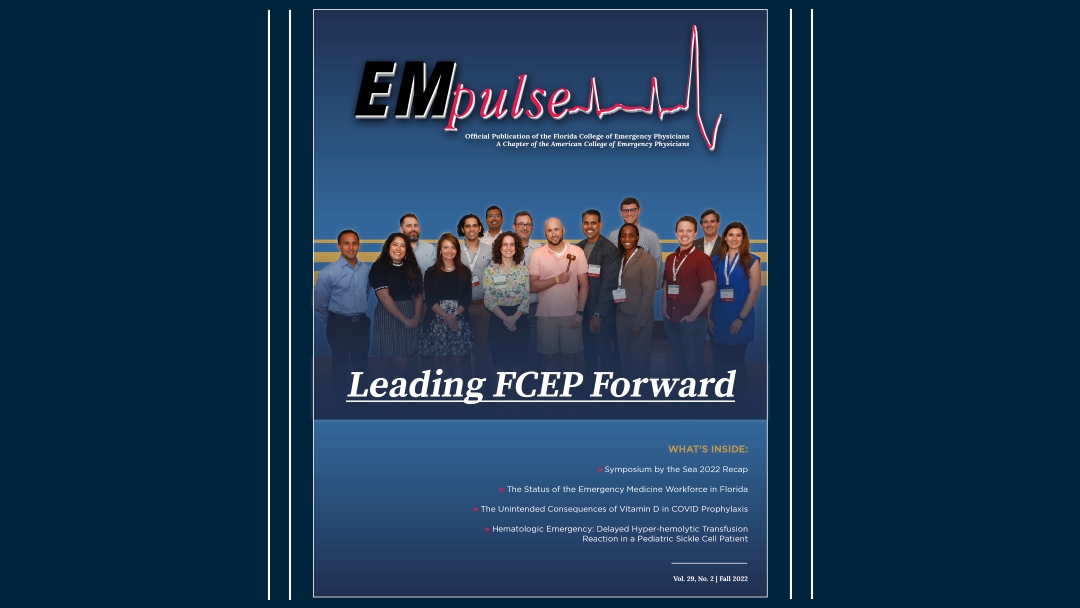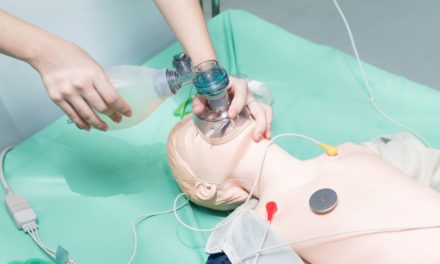A Tale of Two Shocks: A Cardiogenic Shock Interview With The Heart Failure Specialists
Shock is defined as any condition that causes hemodynamic compromise resulting in systemic hypoperfusion, cellular dysfunction, and potentially end-organ failure and death. [1] It is a medical emergency, and identifying and managing shock states is an essential skill and role of the emergency medicine physician. All patients in shock have an underlying etiology of their circulatory failure. Classically, shock can be subdivided into hypovolemic, obstructive, distributive, and cardiogenic etiologies.
Cardiogenic shock is an etiology that maintains a devastatingly poor prognosis. With studies showing ranges of 25-50% mortality, it should be kept high on the differential for any emergency medicine physician. [2] In cardiogenic shock, the heart is unable to pump blood to the organs with sufficient volume to meet their metabolic demands. Over the past decade, the National Cardiogenic Shock Initiative has been aiming to provide protocols for the management of cardiogenic shock, with promising results. [3, 4]
By contrast, septic shock is perhaps the most talked-about form of shock. [5] This subtype of distributive shock involves intact cardiac function, but with dilated, leaky vasculature, which causes third spacing of fluid and decreased tissue perfusion. Despite nationwide hospital initiatives to improve sepsis recognition and management, there is mixed evidence regarding overall outcomes. [6]
An issue that stands amongst clinicians is differentiating cardiogenic shock from other forms of shock. Many forms of shock can present similarly, with hypotension, tachycardia, and elevated lactic acid indicating end-organ hypoperfusion. This presents a clinical dilemma to the emergency physician, as some etiologies of shock rely on fluid resuscitation as a mainstay of treatment, while cardiogenic shock requires IV inotropes, vasopressors, and diuresis to return the patient to homeostasis. [4]
We interviewed two heart failure specialists for their perspectives on the recognition and management of cardiogenic shock. Dr. Waqas Ghumman, MD, an Advanced Heart Failure and Transplant Cardiologist, and Jennifer Paciletti, ARNP, an Advanced Heart Failure Nurse Practitioner, practice at HCA Florida JFK Hospital. Dr. Ghumman is also the program director for the Heart Failure and Transplant Cardiology fellowship at HCA Florida JFK Hospital/University of Miami Miller School of Medicine.
How do you recognize a patient in cardiogenic shock?
Paciletti: Definitely get an echo. We utilize the point-of-care ultrasound (POCUS) a lot in the ICU settings. Also, checking lactates, of course, with hemodynamics and blood pressure. We can use a Swan-Ganz Catheter if we have one in place, but that comes a bit later in the ICU.
Ghumman: I’ll make it even more simple. First, to diagnose shock, patients must show organ dysfunction, such as they’re not mentating, peeing, or something similar. Then, the question is, what kind of shock is it? Is it septic/distributive, cardiogenic, obstructive, etc.?
Cardiogenic is a cold shock, so patients tend to have cool extremities because they’re vasoconstricted and their cardiac output (CO) is low. It can be confusing which form of shock it is, especially compared to septic shock. With the Surviving Sepsis Campaign, all shock is septic until proven otherwise, because their criteria are the same criteria for all types of shock.
[Once you’ve diagnosed shock], you have to prove it’s the heart. An echo can prove it if you have low cardiac output.
At first glance, many patients in shock may look similar. Cases of cardiogenic shock may initially be mistaken for septic or distributive shock. How do you differentiate the two?
Ghumman: It’s because the Surviving Sepsis criteria for septic shock are very non-specific. If you’re tachycardic, tachypneic, hypotensive, or have elevated lactate, it’s assumed to be septic. There is significant overlap in the presentations of patients in shock. They should, in theory, be different. Septic shock is a warm shock: patients are vasodilated, [cardiac] output is high, and they should have warm extremities. Cardiogenic is a cold shock, meaning high vascular resistance and low [cardiac] output. Using warm versus cold is a pretty good delineator. POCUS is important as well.
Some physicians use troponin [and BNP], but that can go up not just in heart attacks, but also in sepsis and other conditions. In isolation, you can’t use troponin or BNP as purely cardiac.
Additionally, if you make the wrong diagnosis, it does matter. The Surviving Sepsis Campaign is big because sepsis kills, and doing the right thing for sepsis does improve survival. We actually did a study here. [7] It turns out, when you treat septic patients who have a history of heart failure with a bolus of fluid, the higher volumes of intravenous crystalloid increase the mortality in some populations, precipitating pulmonary edema and worsening cardiogenic shock. The excess fluid translates to more ICU time, more ventilator time, and more myocardial dysfunction.
What recommendations do you have for emergency physicians who are working up a patient in undifferentiated shock?
Ghumman: Determine if it’s shock from low systemic vascular resistance (warm shock) or low CO (cold shock). That’s a good differentiator. If you’re in doubt, get an echo or POCUS. On ultrasound, getting a four-chamber view to look at the left and right ventricles is great. If you see the ventricles are hyperdynamic and collapsing on themselves, that’s not cardiogenic. Check the IVC. Septic or hypovolemic will be collapsed, whereas in cardiogenic, it’s going to be dilated. You can use [diffuse] B-lines as well to suggest pulmonary edema. And the stories need to fit. Septic shock should have a fever and a source of infection. [Patients with] cardiogenic generally have known heart disease or an ischemic event, so make sure you get an EKG. Consider an echo. If it doesn’t fit, you have to quit. There’s no harm in asking for advice.
What approach do you take to stabilizing and managing a patient recognized to have cardiogenic shock?
Ghumman: You do what your body does. If you have low cardiac output, your body raises vascular resistance. If they have profound hypotension, start a vasopressor [such as norepinephrine]. If mild, start an inotrope [such as dobutamine or milrinone].
Paciletti: It is important to assess if the shock is due to ischemia. Then, if they need revascularization, activate the cath lab.
Do you have any last thoughts or points?
Ghumman: Be a good clinician. If the story doesn’t add up, ask for help. If it adds up, you’re probably clear. And then follow up, because if you’re wrong you’re going to know. And it’s okay to be wrong; we’re not perfect. ■







